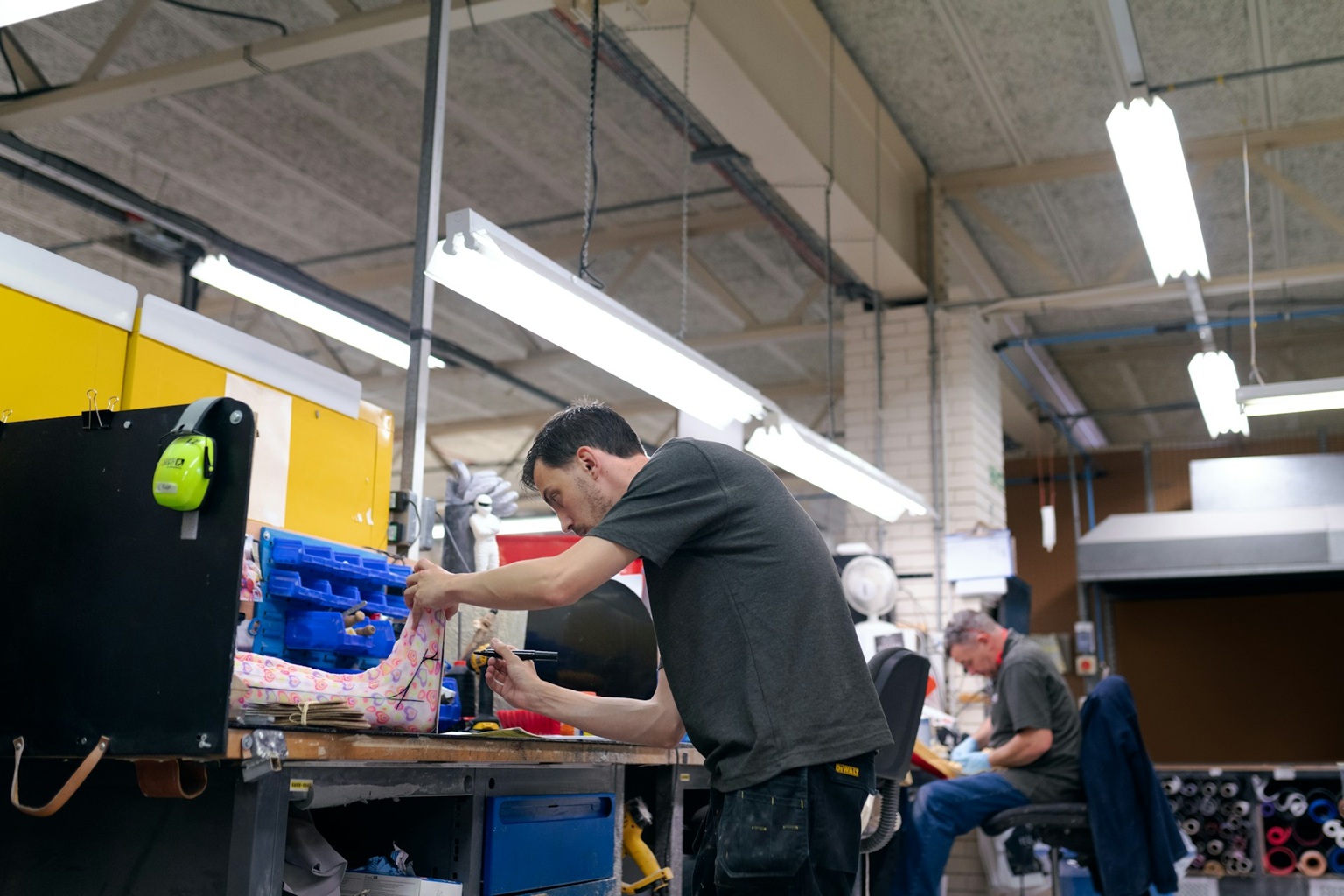
Unlocking Peak Productivity: A Guide to Calculate Production Output
May 21, 2024 - Emily Newton
Revolutionized is reader-supported. When you buy through links on our site, we may earn an affiliate commission. Learn more here.
Knowing how to calculate production efficiency is essential for all managers overseeing assembly lines and other industrial operations. Numerous factors can change output, but the sooner leaders know about reductions, the faster they can act to remedy them.
When Should Leaders Calculate Production Efficiency?
Production output measurements become valuable tools when significant changes affect processes. They could include:
- Introducing new products.
- Welcoming additional workers.
- Creating extra or longer shifts.
- Altering well-established workflows.
- Installing new equipment.
- Changing training approaches.
- Removing assembly line steps.
- Mandating different quality control methods.
- Implementing more technologies.
- Integrating safety mechanisms.
These all require adjusting to new operations, which takes humans time. Most employees become increasingly productive as they become accustomed to their roles, and feel more comfortable in the environment and around fellow workers. Additionally, once they understand an employer’s expectations, they can experiment by tweaking processes to enhance personal results. Those positive changes affect entire teams and companies collectively.
One best practice is to obtain a baseline measurement showing production output before changes occur. Then, periodically go through the same process to see what is different each time. Those frequent check-ins allow detecting and dealing with issues before productivity drops too much. Staying on top of the problem makes it more manageable and facilitates practical solutions.
Leaders should treat the results as celebration opportunities once productivity calculations show meaningful, lasting changes. Staff appreciate knowing when they are doing well and that superiors have noticed.
How to Calculate Production Line Efficiency: Formulas and Beyond
People have several ways to determine and track the efficiency of their production lines. Their methods may vary according to the manufactured goods, brand size or specific processes.
The Production Efficiency Formula
The production efficiency formula requires calculating two aspects to get a combined result. Begin by figuring the actual output rate, which indicates the number of items produced in a specific time frame.
Determine the number of items produced. Then, divide that number by the appropriate time. Consider an example where you run a medium-sized business, and your workers make 2,400 items per eight-hour workday. When dividing 2,400 by eight, you end up with 300, which means the workforce produces that number of items each hour.
Next, you must find the standard output rate, which is how much an average worker produces in your chosen time frame. Returning to the previous example using an eight-hour day, assume you have reviewed your enterprise’s historical data and found workers finish an average of 40 products in the chosen period. That means their standard output rate is five items per hour.
Now, apply the production efficiency formula by dividing the actual output rate by the standard output rate. Finally, multiply the result by 100. Plugging the previous example’s numbers into the formula would look like so — (300/40) x 100 = 750.
A similar but faster way to calculate production efficiency is to divide the total number of items produced by a period’s labor hours. Perhaps a plant’s workers made 30,000 items in a month with 3,000 work hours. Then, the workforce created 10 items every hour.
The Costs of Goods Sold (COGS) Formula
As people become more familiar with productivity tracking, they sometimes want to calculate other, broader metrics. The cost of goods sold formula makes that easy. It accounts for direct production costs, which are typically labor and materials. However, people do not calculate indirect costs with this formula.
The basic calculation is — Beginning inventory + Materials and labor costs – Ending inventory
The COGS formula measures a manufacturer’s profitability. If goods-related costs climb while revenue drops or stalls, that situation requires urgent attention. This approach also allows users to examine how changing expeses could impact the business. If a manufacturer can secure a bulk discount on essential raw materials, would the savings allow hiring another worker without spending more?
One manufacturing company uses leased robots costing $8 per machine per hour. Executives calculated that such an approach would be more economical than hiring a worker at a $15 hourly wage. Situations are only sometimes so straightforward, especially since robots cannot yet do as many individual tasks as people. Humans also excel at more creative duties, while machines may be superior in highly repetitive ones.
Calculating Production Output With Historical Data
Many manufacturers take data-driven approaches after using the abovementioned formulas. One popular method is to use specialized platforms to determine the likely changes behind significant productivity reductions or improvements.
Labor shortages perpetually challenge the manufacturing industry, and that is not likely to change anytime soon. One study found over 50% of workers planned to leave it by the end of 2023. If even a quarter of that figure followed through, their absence would force leaders to get creative with hiring and retention strategies.
A brand’s data may show a sharp decline in production output followed by slow but progressive improvements. A possible explanation is highly experienced team members left and finding suitable replacements took time. Relatedly, even people with manufacturing experience will not immediately be as fast as the workers who departed their roles.
Managers can use such circumstances to estimate how long the workforce’s productivity might decline or level off before climbing again. Conversely, they could dig through historical data to find potential connections between production output enhancements and a recent automation investment.
New equipment investments are similar to hiring more team members in that they do not immediately give positive results. Just as people need time to train and feel comfortable in their roles, it usually takes a while to program machines and teach staff how the equipment fits into their work. These examples show why managers must do more than learn how to calculate production line efficiency. While that is a good start, they should also apply personalized approaches after using the formulas.
A 2022 study found 77% of manufacturers thought smart technologies would increase competitiveness. However, only half of respondents were willing to invest in them. The second figure may rise if executives examine internal data and see persistent productivity deficiencies.
Actionable Ways to Boost Production Output
How can manufacturing leaders meet goals after identifying the need for productivity improvements? Well-defined, proven approaches help.
Combine Human Output With Cobots
Manufacturing workers often have highly developed skills and in-depth product knowledge, including how to avoid defects and production bottlenecks. However, people become tired and distracted, making them less productive. One solution is to invest in cobots that operate next to workers. These machines can increase productivity by as much as 40% while reducing labor costs by 20%.
Get the best results by targeting the most time-consuming or error-prone tasks, and then exploring whether cobots could feasibly do them. Alternatively, investigate how the machines could handle process steps that cause the most fatigue and boredom.
Reduce Downtime and Delays
Research from 2022 indicated manufacturing plants experience up to 25 hours of downtime monthly. Once managers calculate production efficiency, they may find improvements unrelated to human output. Perhaps an older essential machine failed twice in the past six months and restoring its functionality took at least three operating days in each case. An investigation may reveal the best solution is to replace the aging equipment with a more reliable model. Although people can prolong equipment life span with proper maintenance and usage, no machine lasts forever.
Delays may have more human-driven influences. These instances do not stop production, but they slow it, adversely impacting output. Workflow disruptions happen if employees spend several minutes replenishing their workstations every few hours or regularly waste time waiting for more products to reach them. Getting to the bottom of these issues is the first step to resolving them proactively.
Prioritize Worker Comfort in Hot Weather
University of Exeter researchers tracked how outdoor temperatures impacted indoor factory workers in climate-controlled conditions, reaching surprising conclusions. One was that productivity dropped by 0.83% for every 1.8° Fahrenheit increase in the outdoor temperature.
Additionally, this study’s workers made silicon wafers in temperature-controlled environments. However, the 0.83% productivity drop resulted in them producing 22.6 to 33.4 fewer wafers per shift.
The researchers also examined whether above-average sleeping temperatures affected people’s productivity the next day. Although that happened, the effects were not as pronounced as the decreased output associated with working in hot weather. Since being in an air-conditioned environment still caused productivity drops, executives with factories in hot climates should consider supplementary products for workers, such as personal fans or cooling neck wraps.
Start Elevating Efficiency Today
Use this guide to calculate production efficiency confidently, staying mindful of how individual factory conditions or other variables cause short-term gains and losses. Checking internal data to find prolonged patterns is an ideal way to find focus areas.
Revolutionized is reader-supported. When you buy through links on our site, we may earn an affiliate commission. Learn more here.
Author
Emily Newton
Emily Newton is a technology and industrial journalist and the Editor in Chief of Revolutionized. She manages the sites publishing schedule, SEO optimization and content strategy. Emily enjoys writing and researching articles about how technology is changing every industry. When she isn't working, Emily enjoys playing video games or curling up with a good book.






